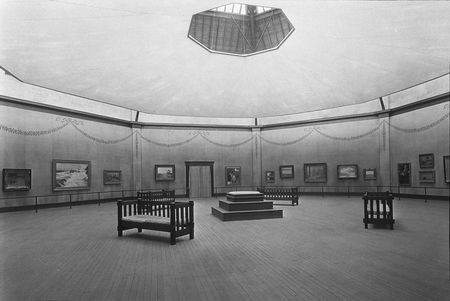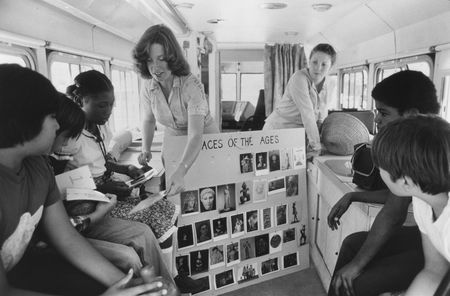This week is National Library Week, which makes it the perfect time to meet the Mayer Library’s new librarians, Jenny Stone and Kellye Hallmark.

Jenny Stone, Librarian
Describe your job in fifty words or less.
I’m the Librarian in the DMA’s art research library, a.k.a. The Mayer Library. I manage the day-to-day activities of the library, handle our interlibrary loan service, and help answer questions from staff and the public.
What might an average day entail?
On any given day, I might have reference e-mails to answer, hunt down materials for research projects, purchase books, give a library orientation to a new staff member, or problem solve with Cathy Zisk, our cataloger, on how to handle an odd-shaped book.
How would you describe the best part of your job and its biggest challenges?
The best parts of the job are the books!—and the cool things I learn about the collection and the Museum from various projects and questions we get. The biggest challenge: describing to visitors how to get from the Library to the European galleries.
Growing up, what type of career did you envision yourself in? Did you think you’d work in an art museum?
I come from a family of librarians, so it was pretty much inevitable. And I can’t think of a better place to come to work every day than an art museum.
What is your favorite work in the DMA’s collection?
If I could stare at anything in the collection all day, it would either be Tatsuo Miyajima’s Counter Ground or Edouard Manet’s Vase of White Lilacs and Roses. Ask me tomorrow and I’ll have a different answer!
Is there a past exhibition that stands out in your mind as a favorite, or is there a particular upcoming show you’re looking forward to seeing?
The Fashion World of Jean Paul Gaultier was probably the most exciting and fun exhibition. The Mourners really opened my eyes to something new and unusual and beautiful, and Nur: Light in Art and Science from the Islamic World is very similar in that way.
Kellye Hallmark, Assistant Librarian
Describe your job in fifty words or less.
You can generally find me at the reference desk, where I assist both staff and visitors with locating materials, research, and a variety of questions associated with the Museum and our collection. Recently a PhD student from the University of Montana wanted to know what ancient sculptures we have that are made of serpentine or greenstone, and an ancestor of John Pratt had just discovered her lineage and called the library to see if his portrait by Ralph Earl was on view and to learn more about the work. I also manage our serial collection, as well as maintain and create artist files.
What might an average day entail?
Each day holds a new project or a new reference question, so it varies, but it is always something fun and interesting. Generally I am checking in new serials, scanning the papers for museum- or art-related news, and working on a special project, like researching Islamic art books for purchase.
How would you describe the best part of your job and its biggest challenges?
The best part of my job is being able to look at all of the new books and serials that arrive almost daily. I’m constantly learning about new artists, new shows, etc., and that is really fun. The biggest challenge is making myself put down all of those new books and serials—there just isn’t enough time to read it all!
Growing up, what type of career did you envision yourself in? Did you think you’d work in an art museum?
I always knew I would work in an art museum. I got my BA in Art History fully expecting to pursue a career as a curator, but my focus and passions changed and they led me to art librarianship, and I couldn’t be happier.
What is your favorite work in the DMA’s collection?
I’ve always loved San Cristoforo, San Michele, and Murano from the Fondamenta Nuove, Venice by Canaletto. I love his perspective and how so much of the painting is the sky. I love the Sculpture Garden as well; it’s such a great place to spend your lunch break and to see little kids play.
Is there a past exhibition that stands out in your mind as a favorite, or is there a particular upcoming show you’re looking forward to seeing?
Being fairly new, I have to say that the Edward Hopper exhibition that just closed was definitely a stand out—it was fantastic. I was also blown away by the Nur exhibition, and I can’t wait to see the Michael Borremans exhibition next year.
The Mayer Library is located on Level M2, and is open to the public Tuesday through Friday 11:00 a.m.-4:30 p.m. and Saturday noon-4:30 p.m.
Hillary Bober is the digital archivist at the Dallas Museum of Art.
































